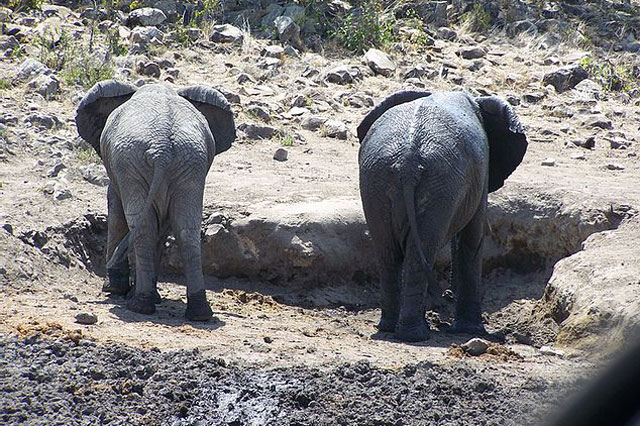Black birds with orange beaks are a fascinating and diverse group of bird species that can be found in various parts of the world. Whether you are trying to identify a bird you saw or are just curious about this color combination, we will look at some of the most well-known species. Let’s explore 16 of the most interesting black birds with orange beaks, including their appearance, diet, behavior, and habitat.
1. SURF SCOTER

Scientific name: Melanitta perspicillata
The Surf Scoter is a sea duck species that can be found in the coastal waters of the Pacific and Atlantic oceans. They breed during the summer in far northern Canada and the Arctic, so most people see them during migration and winter, when they can be found along the coast from Alaska to California on the Pacific coast and from Maine to Florida on the Atlantic coast.
Surf Scoters have a diet that consists mainly of mollusks, crustaceans, and small fish. They dive underwater to forage for food and can stay submerged for up to 30 seconds. They are also known to feed on aquatic plants and invertebrates.
These ducks are known for their social behavior and are often seen floating together in large groups during the winter. They are also known for their unique courtship displays, which involve the males bobbing their heads and making vocalizations to attract females.
Male Surf Scoters have striking black and white plumage with a bright orange bill. Females are dark brown with a dark bill.
2. BLACK SCOTER

Scientific name: Melanitta americana
Another scoter that makes the list is the Black Scoter. Males are all black with a bright orange knob at the base of their bill. Females are brown overall with a pale cheek and dark cap. They have a compact body and a rounded head.
This sea duck species is found in the coastal waters of the northern hemisphere. They are found along both coasts of North America, and inland on lakes and ponds in the northeast during migration. They are also found in Europe and Asia, primarily in the coastal waters of the Arctic and sub-Arctic regions.
Black Scoters eat a lot of insects and larvae such as mayflies and caddisflies during the summer. Come winter, they switch over to shellfish, crustaceans and marine vegetation.
Male Black Scoters are known for their loud calls, a sad-sounding descending “wheee-oooo” whistle. During courtship, females may respond by calling back.
3. TUFTED PUFFIN

Scientific name: Fratercula cirrhata
Tufted Puffins are a seabird species that can be found in the North Pacific Ocean. They breed on rocky islands and cliffs along the coasts of Alaska, British Columbia, and Siberia. During the non-breeding season, they can be found in the open ocean.
Tufted Puffins diet consists mainly of small fish, such as herring and sand lance, as well as squid and crustaceans. They catch their prey by diving underwater and using their wings to swim and propel themselves through the water.
These handsome puffins have black bodies, orange feet, a white face and bright orange beak. Breeding adults also have unique pale blonde plumes that extend from above their eyes and curl down their neck, giving the appearance of slicked back hair. These tufts are used in courtship displays and are shed after the breeding season.
Tufted Puffins are social birds and form large colonies during the breeding season. They nest in burrows or crevices on rocky cliffs and islands. They are also known for their unique vocalizations, which include grunts, growls, and high-pitched whistles.
4. EUROPEAN STARLING

Scientific name: Sturnus vulgaris The European Starling is a bird species that is native to Europe, Asia, and North Africa. They were introduced to North America in the 19th century and have since become a common bird species throughout much of the continent.
European Starlings have a varied diet that consists of insects, fruits, and seeds. They forage on the ground and in trees, and will often flock together in large numbers to search for food. During certain times of year they fly together in the sky in huge coordinated displays called murmurations.
In bright light you can see the iridescent purple and green hues, but when in shadow starlings look mostly black with speckles. Their beaks can be yellow or orange-yellow. They are also known for their unique vocalizations, which include a wide range of whistles, chirps, and trills.
They can be problematic at bird feeders, showing up in flocks, pushing other birds out of the way and quickly eating a lot of food. We have some tips here on how to manage them if you have that problem.
5. COMMON BLACKBIRD

The Common Blackbird is a bird species that is found throughout much of Europe, Asia, and North Africa. They have also been introduced to Australia and New Zealand.
Adult males are all black with an orange-yellow beak and orange ring around the eye. Females look very similar but are more of a dark brown all over. These adaptable birds can be found in a wide range of habitats, including gardens, parks, woodlands, and farmland. They are considered to be a common garden bird and are often seen feeding on bird feeders and in bird baths.
Common Blackbirds have a varied diet that consists of insects, earthworms, fruits, and seeds. They tend to forage on the ground and in trees, and they will often turn over leaves and debris to search for food. You’ll hear a wide range of vocalizations from this bird, which include whistles, warbles, and chattering calls.
6. AMERICAN ROBIN

Scientific name: Turdus migratorius
Robins are one of the most widespread and well-known birds in North America, found in forests, woodlands, parks, and gardens. Adult American Robins have a distinctive appearance, with a bright orange-red breast, dark gray back, black head, and yellow-orange beak. Males and females look similar, but males tend to have brighter plumage.
American Robins are known for their sweet, melodious song, which is often heard in the early morning and evening. They are also known for their habit of hopping along the ground, especially large grassy areas like lawns, digging up earthworms and insects. During the breeding season, American Robins build cup-shaped nests out of twigs, grasses, and mud, usually in the crotch of a tree, but they also seem to like ledges of man-made structures like windows.
Robins tend to be associated with the return of spring. It is true that many robins will make short migrations south in the winter and return north in spring. However some robins stay in their northern grounds year-round, and are perfectly capable of surviving in the cold.
7. BLACK SKIMMER

Scientific name: Rynchops niger
Black Skimmers are found along the coasts of North and South America, from the southern United States to northern Argentina. They are also found in the Caribbean and the Galapagos Islands. They prefer to live in coastal habitats such as beaches, sandbars, and estuaries where they can feed on fish and other aquatic prey.
These birds have unique physical characteristics, including their long wingspan, black upper parts, and white underparts. However, their most unique feature is their long, narrow bills that are sharply edged, and the lower mandible is longer than the upper one. The base is bright orange while the tip is black.
Black Skimmers have adapted to living near humans and are often seen near piers and marinas, where fishing activities provide them with easy access to food.
To catch fish, they fly low over the water’s surface, with their lower bill dipped in the water, and they use their sensitive nerves in the lower mandible to detect fish and other prey. Once they detect prey, they snap their bill shut, catching the prey in a swift motion. This act of dragging or skimming their beak along the water is how they got their name.
8. COMMON GALLINULE

Scientific Name: Gallinula galeata
The Common Gallinule, also known as the Common Moorhen, is found in many parts of the world, including North and South America, Europe, Africa, and Asia. They are commonly found in freshwater wetlands, such as marshes, swamps, and ponds. They like both open-water and areas of floating vegetation.
Common gallinules eat flower seeds, vegetation and insects they take from the waters surface. They can also use their long toes to flip over floating leaves and plants to find snails.
They have a dark black and brown body, bright orange-red forehead and beak tipped in yellow, and greenish-yellow legs and feet. Their toes are extra long and lobed, but not webbed. This makes it easier for them to walk on top of aquatic vegetation like lily pads, and to not sink in soft mud.
9. BLACK OYSTERCATCHER

Scientific name: Haematopus bachmani
Black Oystercatchers are found along the rocky coasts of the Pacific Ocean, from Alaska to Baja California in Mexico. They are also found in parts of Asia, including Japan and Russia.
Their have dark plumage, with a black head and neck and dark brownish-black body. But they also have pops of color, with their large orange beaks, eyes, and pink legs and feet. They have a range of vocalizations which include whistles and chattering sounds.
Black Oystercatchers eat a diet that mainly consists of shellfish, such as mussels, clams, and oysters. Their strong, pointed bills help them pry open the shells of their prey. These birds are well adapted to life in the intertidal zone, where they forage for food, roost, and even nest along the rocky shore. They are also able to swim and dive underwater to forage for food.
10. TOCO TOUCAN

Scientific name: Ramphastos toco
The stunning Toco Toucan lives in South America, primarily in the Amazon Basin, as well as in parts of eastern Bolivia, Paraguay, and northern Argentina.
These birds are known for their distinctive appearance, including their colorful beak. They have a dark black body, white throat, blue eyes, and bright orange bill. Their bill is the largest of any bird in relation to its body size, and it serves as a visual and auditory signal during courtship and social interactions.
Toco Toucans have a varied diet that consists mainly of fruit, but they also eat insects, small lizards, and eggs. They have a unique bill that is adapted for reaching and plucking fruit from trees and shrubs. Toco Toucans are adapted to life in the forest canopy, able to hop and climb along branches and trunks.








